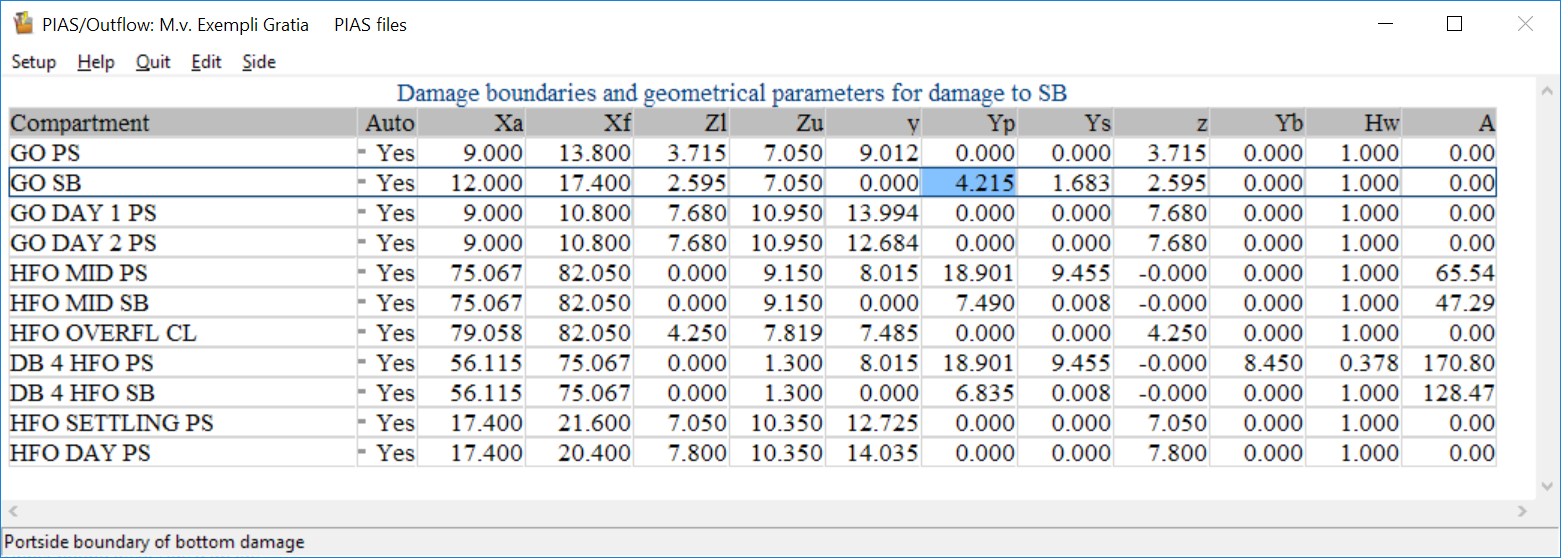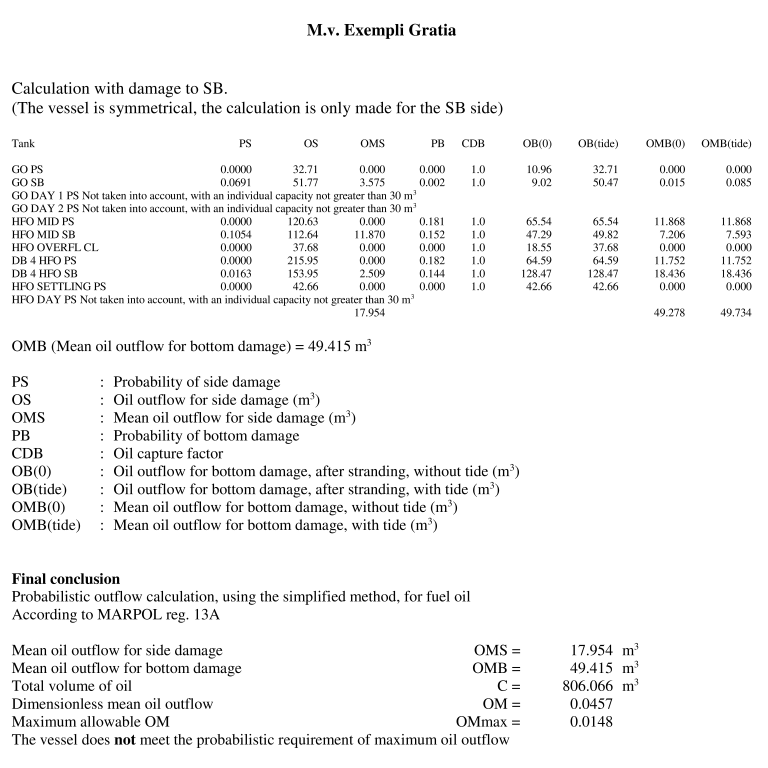 |
PIAS Manual
2025
Program for the Integral Approach of Shipdesign
|
 |
PIAS Manual
2025
Program for the Integral Approach of Shipdesign
|
MARPOL contains two sets of probabilistic outflow regulations:
This PIAS module performs a simplified calculation, as prescribed in detail in MARPOL. The alternative would be an exact calculation, as e.g. available in Probdam for the computation of prbabilistic damage stability. Such a calculation is explicitly accepted according to reg. 23.10 for oil tankers. For fuel oil tanks this method is not referred to, however, because the calculations for cargo oil and fuel oil are identical, besides for some detail, it could very well be applied to fuel oil tanks too. By the way, the explanatory notes — explanatory notes on matters related to the accidental oil outflow performance under regulation 23 of the revised MARPOL Annex I, 15 October 2004, MEPC.122(52) — make mention of the fact that in non-rectangular cases the simplified method gives a higher outflow than a more exact approach. If desired, SARC will implement a calculation on the basis of the numerical integration method, if:
The requirements contain rules for determining the probability of an average outflow on the basis of many tank parameters (like distances to shell and bottom, volume, tank boundaries). The ship complies with the rule when that average outflow is smaller than a certain maximum.
This module automatically determines all these tank parameters, but, as usual, not all rules are equally objective. Take, for example, the determination of the distance y, which is the `minimum horizontal distance between compartment and side shell'. Such a definition raises the question what the ‘side shell’ exactly is. Does it run on into the bottom, or into the bilge? And what in case of a rounded gunwhale? In order to have some certainty about this definition, one has added, at the rules for fuel oil tanks anyway: In way of the turn of the bilge, y need not be considered..... This does not solve the problem, however; because where exactly is that way of the turn of the bilge, and what about the fore and aft parts, where there is not a real bilge, but where everything is just curved?
Because the determination of certain dimensions is therefore sometimes subjective, these can also be given manually as the occasion rises. In any case, it is strongly recommended to check the penetration and tank dimensions thoroughly. Finally, two more remarks:
This module is activated by chosing from PIAS' main menu, via option Other, the module Outflow. After specifying the PIAS file name this module's main menu appears:
At this option one can choose between calculations for fuel oil or cargo oil. Each tank must be assigned the correct content destination type in Layout, see Oil outflow parameters.
In the future this option will be the place to toggle between a simplified calculation and a calculation on the basis of numerical integration.
If hullform and compartment are completely symmetrical, then it is sufficient to perform the calculation for one side only (we chose SB). In case of asymmetry the calculation is performed to both SB and PS, and the result is averaged. So, this choice is not governed by the setting of the side of calculation as given at the general project configurations ( Calculate intact stability etc. with a heeling to).
For the determination of the calculation draft. The drafts as entered here are not integrated with the corresponding data from Probdam.
Please refer to the remark just above, at Light ship draft
Here two choices can be made:
If the second option is selected at the previous line, then at this line the uniform density for all tanks can be given.
Here two choices can be made:
If the second option is selected at the previous line, then at this line the uniform permeability for all tanks can be given.
As indicated in the introduction, the penetration of side damage, y, needs only to be determined from the side shell (and, with fuel oil tanks, not below h=min(B/10,3)). As an aid for the question where the side shell ends, at this option a certain minimum height for the determination of y can be specified (by the way, the h=min(B/10,3) will always be applied in case of fuel oil tanks).
If the previous line is set to ‘Yes’, then at this line the minimum height (in meters from baseline) can be given.
The answer to this question is relevant for the determination of factor C3, see reg. 23.6 of the cargo oil rules.

As motivated in the introduction, it can be desirable to give certain dimensions or distances manually. That can be done in this menu, where the different columns have the following meaning:
With this option the calculation is executed and printed. An output example is included just below.
